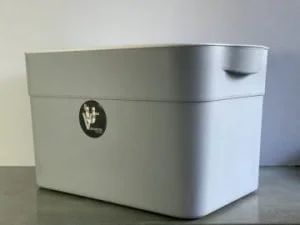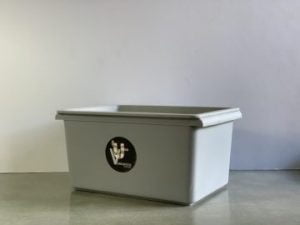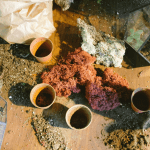How to Vermicompost in the Philippines: 3 Ways It’s Different
Introduction
You might’ve read about vermicomposting from multiple sources worldwide. With all the wealth of information available, you may have found that few are contextualized to the Philippine climate. Maybe you’ve tried your hand at vermiculture using their techniques but failed to succeed. While caring for composting worms in temperate climates is similar in the Philippines, there are key differences that might cause you to run into a few unexpected problems.
First things first, there are 3 key differences that are unique to vermicomposting in the Philippines that you won’t find in temperate climates (such as the United States):
- The Philippines’ High Temperatures
- Tropical Humidity Levels
- The Vermicomposting Worm Breed Used
With this, understanding how to deal with these 3 differences in cultivating composting worms in the Philippines might spell the success (or failure) of your worm bin. So if you’re curious about how to build a high-functioning worm bin in the Philippines, read on.
1. The Philippines’ High Temperatures
The first and most obvious difference between vermicomposting here vs. abroad is the Philippine climate. Unlike other countries, the Philippines is perennially hot. This often leads to the issue of overheating in worm bins. Remedying this is simple, with two main solutions: 1) Place your worm bin in a cool, shaded area and 2) Reduce moisture levels during extremely hot months.
As mentioned, first, never leave your worms under the sun or unprotected from the elements. Keeping your worm bin in a cool area usually is enough to manage your bin’s temperatures. On the other hand, the second seemingly counterintuitive solution is to reduce moisture levels in your bedding. Simply put, water holds more heat, which can build up in a wet bin. With this, reducing moisture levels ensures your worm bin stays cool even during the hot summer months.
2. Tropical Humidity Levels
Another unique thing about vermicomposting in the Philippines is dealing with the country’s humidity. While temperate climates have humidity levels that often run below 50%, tropical climates have average relative humidity levels at 75% all-year-round. This key difference causes different problems here, compared to those in temperate climates.
For instance, during the wet season, your bin could stay wet for days at a time. With this, instead of watering as often as you usually would, you can reduce or stop watering your bin completely. Moreover, extremely high humidity can even cause worms to escape. In fact, you may have seen earthworms come up from the ground after heavy rains; a similar mechanism is at work with your worm bins during extra humid days.
However, escaping worms is easily preventable. If you’re worried about your worms leaving your bin, see our comprehensive guide to preventing compost worms from escaping.
3. The Vermicomposting Worm Breed Used
Finally, given the differences in our climate, the Philippines uses a different breed of composting worms altogether: the African Nightcrawler (eudrilus eugeniae). To the dismay of most, the usual ‘red wigglers’ (a.k.a. esenia fetida or ‘tiger worms’) aren’t used for vermicomposting in the Philippines.
However, the African Nightcrawler worm (ANC, for short) is not an inferior breed by any measure. In fact, the ANC is much more heat-tolerant than the red wiggler; regular red worms would die in our heat. At the same time, African Nightcrawlers can grow over twice as large as tiger worms—which means they’re likewise known to be much more voracious eaters. Some worm farmers who cultivate both breeds claim that ANC eat about 70% more waste per kilo than the red wiggler!
But apart from their size differences and heat tolerance, African Nightcrawlers behave slightly differently than red wigglers. As their name suggests, they sometimes crawl at night. With this, we suggest a few measures to keep them in their bin, such as: 1) leaving the lid open, 2) reducing moisture levels, and 3) keeping the bin somewhere with a faint light. For more details, read our guide to preventing worms from escaping. But not to worry, this tendency to venture out of your bin usually only occurs for the first few days after you receive your worms, or when conditions are not ideal.
With this, the best way to prevent excessive escapees is to purchase a pre-established vermicomposting starter kit rather than buying worms alone. This shortens the acclimation stage that usually occurs when worms are uprooted from their original bedding, increasing their chances of survival.
Where to Buy The Right Worms
And yes—you guessed it, that’s why we sell vermicomposting starter kits, not earthworms alone. We also use African Nightcrawlers instead of red wigglers. So if you’re interested in vermicomposting at home, or know someone who’s interested in vermicomposting, click here or below to get one for yourself.
Conclusion
With that in mind, while the climate in the Philippines and the composting worms used differ from other countries, vermicomposting in the Philippines is not all that different than in other countries. As long as you follow the general basics of vermicomposting, you’ll probably be fine.
Now, it’s your turn. Have you ever heard a piece of advice that you aren’t sure applied to vermicomposting in Philippine conditions? If so, drop your questions below—and we’ll be answer them in no time.
In addition, if you know someone who’s on the fence to try vermicomposting, share this article on social media by clicking the buttons below to convince them to get started today.







